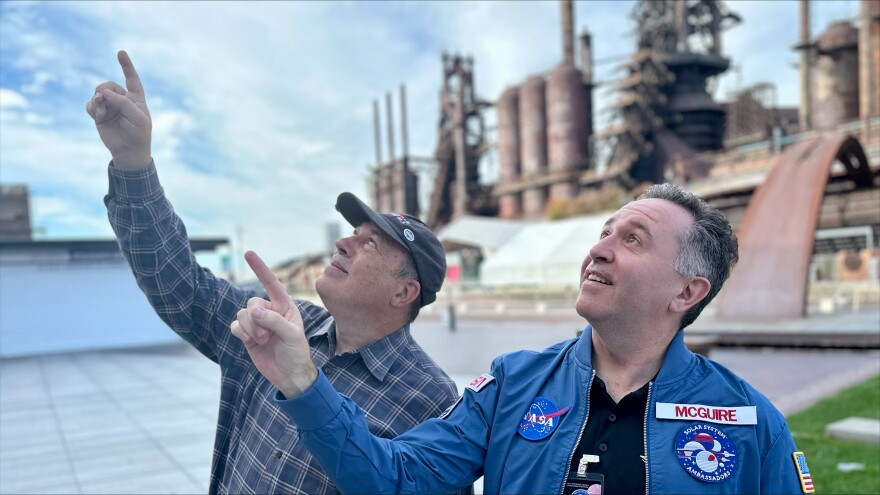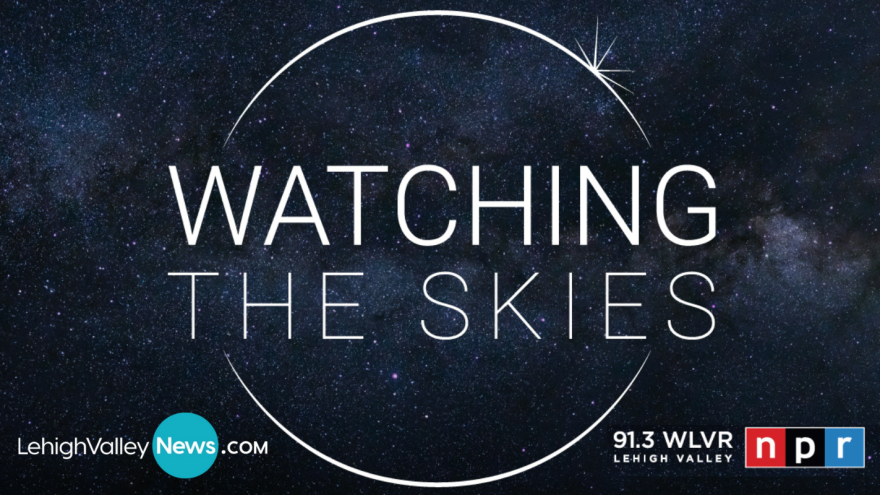BETHLEHEM, Pa. — WLVR’s Brad Klein reviews the week’s astronomical highlights with Bethlehem’s ‘Backyard Astronomy Guy,’ Marty McGuire. This week, Brad and Marty discuss images that McGuire acquired from India’s space program.

The Indian Space Research Organization [ISRO] deployed a lunar orbiter in 2019, according to McGuire. That orbiter, Chandrayaan-2, captures detailed photos of the Moon’s surface, and by carefully sorting through massive, publicly available digital files, McGuire was able to locate images of the first two Apollo landers to set humans on the moon.

The photos show the ‘descent stage’ of the lunar landers, which was left behind when astronauts returned to Earth. The site of Apollo 11, is where Buzz Aldrin and Neil Armstrong first stepped foot on the moon in 1969. And the image of the Apollo 12 landing site, where Pete Conrad and Alan Bean landed later that year, is clear enough to show the paths left behind by the boots of the two astronauts.

Even with a high-grade telescope, you can’t see this level of detail of the Moon’s surface. According to McGuire, even the Hubble telescope, in Earth orbit, is too far away to see the Apollo sites clearly.
McGuire’s website provides more details about how he extracted the two images shown here.


